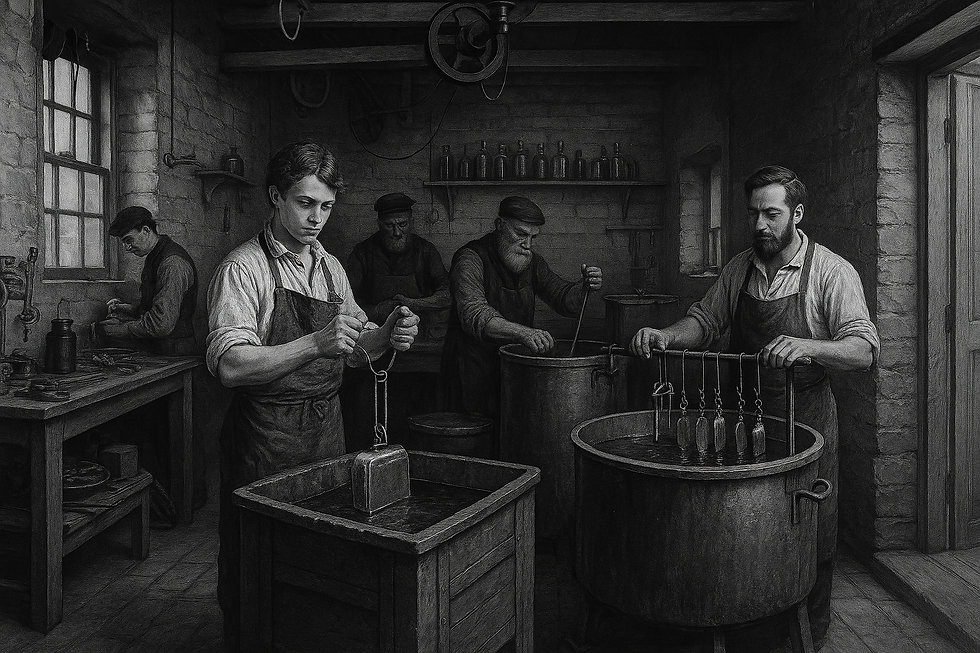The Importance of Flux in Different Applications
- Joe Vella
- Aug 16
- 3 min read
Flux is a vital part of many metal-joining processes — soldering, brazing, and welding — but it’s often overlooked until something goes wrong. Without the correct flux, joints can be weak, brittle, or riddled with defects. With the wrong flux, you can end up with corrosion, contamination, or even complete joint failure.
This guide explains what flux is, how it works, and which type to use for different applications.

What Is Flux?
Flux is a chemical cleaning agent used during metal joining to:
Remove oxides from the surface.
Protect the hot metal from re-oxidising.
Help molten filler metal flow evenly and bond properly.
All metals oxidise when exposed to air, and at high temperatures, oxidation happens faster. Flux chemically dissolves or displaces these oxides and creates a temporary barrier until the joint is complete.
How Flux Works
Oxide Removal – Breaks down the thin oxide layer that forms on metals.
Surface Protection – Shields the heated surface from oxygen in the atmosphere.
Improved Wetting – Allows molten solder, braze, or weld metal to flow smoothly into the joint.
Lead Soldering Fluxes
Lead-tin solder melts at a relatively low temperature (around 180–250°C) and is used in plumbing, stained glass, and traditional electronics.
Rosin Flux – Non-corrosive, ideal for electronics and delicate work. Residue is non-conductive and safe to leave in place for some applications.
Acid Flux – More aggressive, often based on zinc chloride, used for plumbing or sheet metal. Must be cleaned thoroughly to prevent corrosion.
With modern lead-free solders, the melting point is higher and the solder is less fluid, so flux needs to be more active to get a good bond.

Silver Solder and Brazing Fluxes
Silver soldering (hard soldering) and brazing both use filler metals that melt well above 450°C, often in the 600–900°C range.
Borax-Based Fluxes – Commonly a mix of borax, boric acid, and sometimes fluoride compounds.
Designed to stay active for longer at high heat.
Used in jewellery making, engineering, and for joining dissimilar metals.
A correct flux ensures the joint stays clean and prevents the filler from balling up instead of flowing.
Welding Fluxes
In welding, flux may come as:
Coatings on electrodes (stick welding)
Granular fluxes for submerged arc welding
Functions include:
Protecting the molten weld pool from oxygen and nitrogen.
Adding alloying elements to strengthen the weld.
Forming a slag layer that covers the cooling weld bead.
Different fluxes are tailored to different metals — mild steel, stainless steel, and hard-facing alloys all require different compositions.
Choosing the Right Flux
Application | Flux Type | Temp Range | Notes |
Electronics soldering | Rosin (non-corrosive) | 180–250°C | Safe for circuits, minimal residue |
Plumbing soldering | Acid-based | 180–250°C | Strong oxide removal, must be cleaned |
Silver soldering | Borax/boric acid mix | 600–900°C | Long-lasting activity at high heat |
Brazing | Borax with fluoride additives | 800–1000°C | Suitable for dissimilar metals |
Welding | Electrode coating or granular flux | 1400°C+ | Protects and enhances weld quality |
Cleaning After Flux Use
Flux is essential during joining — but it must never remain on the finished part unless specifically designed to be safe. Residual flux can cause:
Corrosion
Staining or discolouration
Poor adhesion for coatings or paints
In restoration and manufacturing, flux removal is critical before further finishing, whether that’s painting, powder coating, or electroplating. Residue is removed by mechanical cleaning, chemical dips, or ultrasonic cleaning to leave the metal completely clean.
Summary: Flux is not “one type fits all.” The right flux depends on the base metal, the filler metal, and the joining temperature. Used correctly, it ensures clean, strong, and durable joints. Used incorrectly, it can cause damage and premature failure. The skill is in knowing the difference — and in ensuring it’s always cleaned away before the next stage of work.
📍 Based in Birmingham’s Jewellery Quarter📞 Contact us today for samples or a consultation🌐 www.concoursplating.co.uk
Contact us today:
+44 121 212 0155



Comments